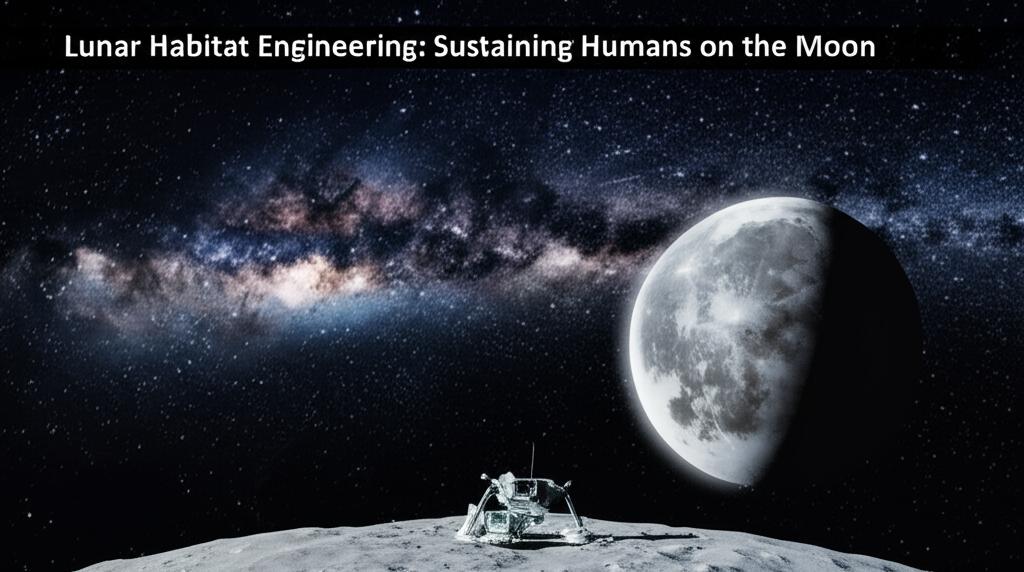Establishing a sustainable human presence on the Moon is a monumental undertaking, requiring innovative solutions to a host of formidable challenges. Recent advancements and ongoing research are paving the way for long-term lunar habitation, focusing on key areas like habitat construction, resource utilization, life support systems, and crew safety.
Construction and Infrastructure:The initial phases of lunar habitation will likely involve pressurized landers and rovers serving as temporary shelters. Looking ahead, the Artemis program and international partners envision aluminum cylinder-like modules, similar in concept to sections of the International Space Station, as early surface habitats. These could be around 10 meters long and 4 to 5 meters in diameter.
A significant focus is on In-Situ Resource Utilization (ISRU), which involves using local lunar materials to construct and sustain a base. This is crucial for reducing dependence on costly Earth-based supplies. NASA's Moon to Mars Planetary Autonomous Construction Technology (MMPACT) project is exploring robotic 3D printing using simulated lunar regolith (surface material) mixed with binders like water, potentially extracted on-site. This technology could be used to build habitats, landing pads, and radiation shields. Chinese researchers have also developed "lunar bricks" from simulated lunar soil, reported to be stronger than standard bricks, with plans to test their performance in space. Some innovative concepts even propose melting lunar glass compounds to create large spherical shell structures for habitats. Inflatable habitat technology is also being considered to expand habitable volumes more efficiently.
Resource Utilization (ISRU):Beyond construction, ISRU is vital for producing essentials like water, oxygen, and fuel. The Moon possesses water ice, particularly in permanently shadowed regions near the poles, which can be a source of hydrogen and oxygen. These elements are critical for life support and can also be used to produce rocket propellant, potentially establishing a lunar economy. Other lunar resources like helium-3 are being considered for future nuclear fusion reactors. Research is ongoing into various extraction techniques, including electrolysis, chemical reduction, and pyrolysis, to process lunar regolith. Molten Regolith Electrolysis (MRE) is a promising method where molten lunar soil is decomposed into metal and oxygen.
Life Support and Environmental Challenges:Sustaining human life on the Moon requires robust life support systems capable of recycling air and water, similar to those tested on the International Space Station. The lunar environment presents significant hazards, including extreme temperature fluctuations (from 150°C at lunar noon to -180°C at night, and even colder in permanently shadowed regions), cosmic radiation, and micrometeorite impacts.
Radiation shielding is a major concern. Early Artemis missions will be limited in duration partly due to radiation exposure. Strategies include burying habitats under lunar regolith or developing advanced shielding materials.
Lunar dust is another critical challenge. This fine, abrasive dust clings to equipment and spacesuits, posing risks to crew health (respiratory issues, cytotoxicity) and damaging mechanical systems. Airlocks with dust removal systems will be essential to prevent dust from entering habitats. NASA is actively testing dust mitigation technologies.
Powering the Lunar Base:Reliable and continuous power is fundamental for lunar operations. Efficient solar power systems are a primary focus, but the long lunar nights (lasting about 14 Earth days in most locations) necessitate energy storage solutions or alternative power sources. Nuclear fission power systems are being considered to provide consistent energy. Some concepts involve space-based solar power (SBSP) stations that could beam energy to the lunar surface.
Mission Timelines and International Collaboration:NASA's Artemis program aims to return humans to the Moon and establish a long-term presence. Artemis II, the first crewed mission around the Moon in this new era, is targeted for September 2025, with Artemis III, planned to land astronauts near the lunar South Pole, scheduled for September 2026. Artemis IV, the first mission to the Gateway lunar space station, remains on track for 2028. These timelines have been adjusted to allow for thorough testing and resolution of challenges related to new technologies and life support systems.
International collaboration is a key aspect of current and future lunar exploration. For instance, the Italian Space Agency (ASI) is developing the Multi-Purpose Habitation (MPH) module, a surface habitat designed to support astronauts and conduct autonomous experiments. China is also actively pursuing lunar exploration, with plans for an international lunar research station. Numerous academic and commercial partnerships are driving innovation in areas like habitat design, resource utilization, and robotics.
The Path Forward:The journey to establishing a sustainable human presence on the Moon is an incremental process. Initial missions will rely on landers for habitat, gradually transitioning to more permanent structures. The development of technologies for lunar habitation also serves as a crucial stepping stone for future human missions to Mars, with the Moon acting as a proving ground for deep space exploration systems. Ongoing research, technological advancements, and international cooperation are essential for overcoming the complex engineering challenges and realizing the vision of humans living and working on the Moon.

